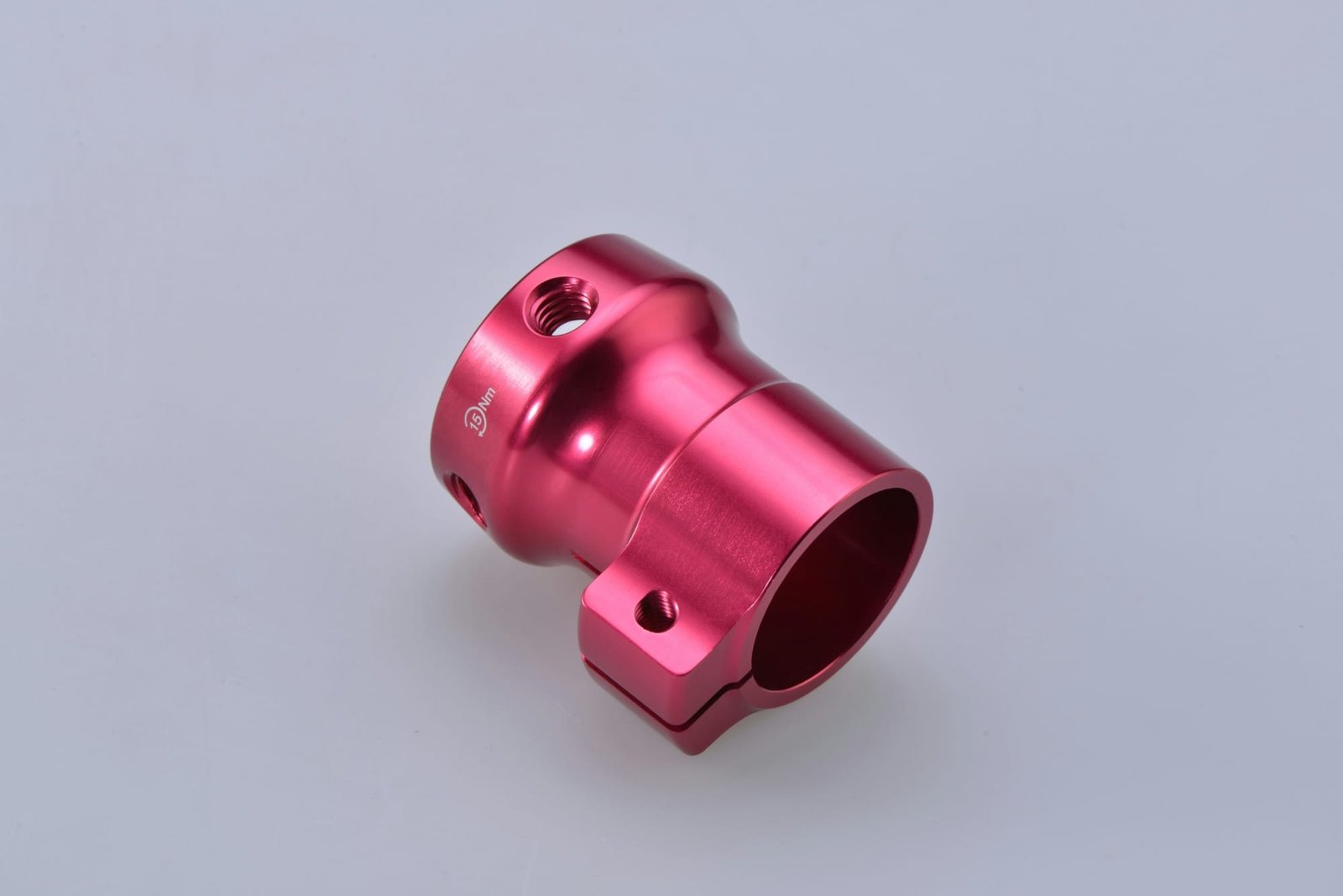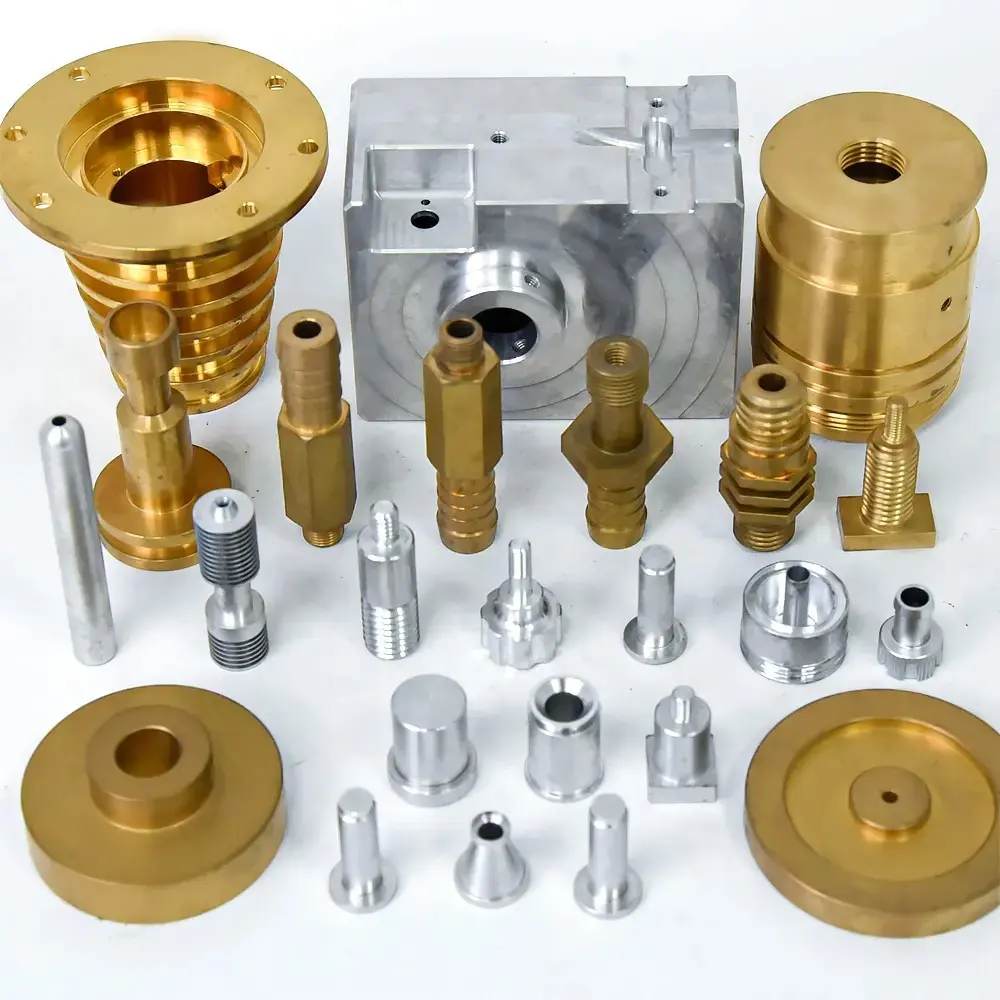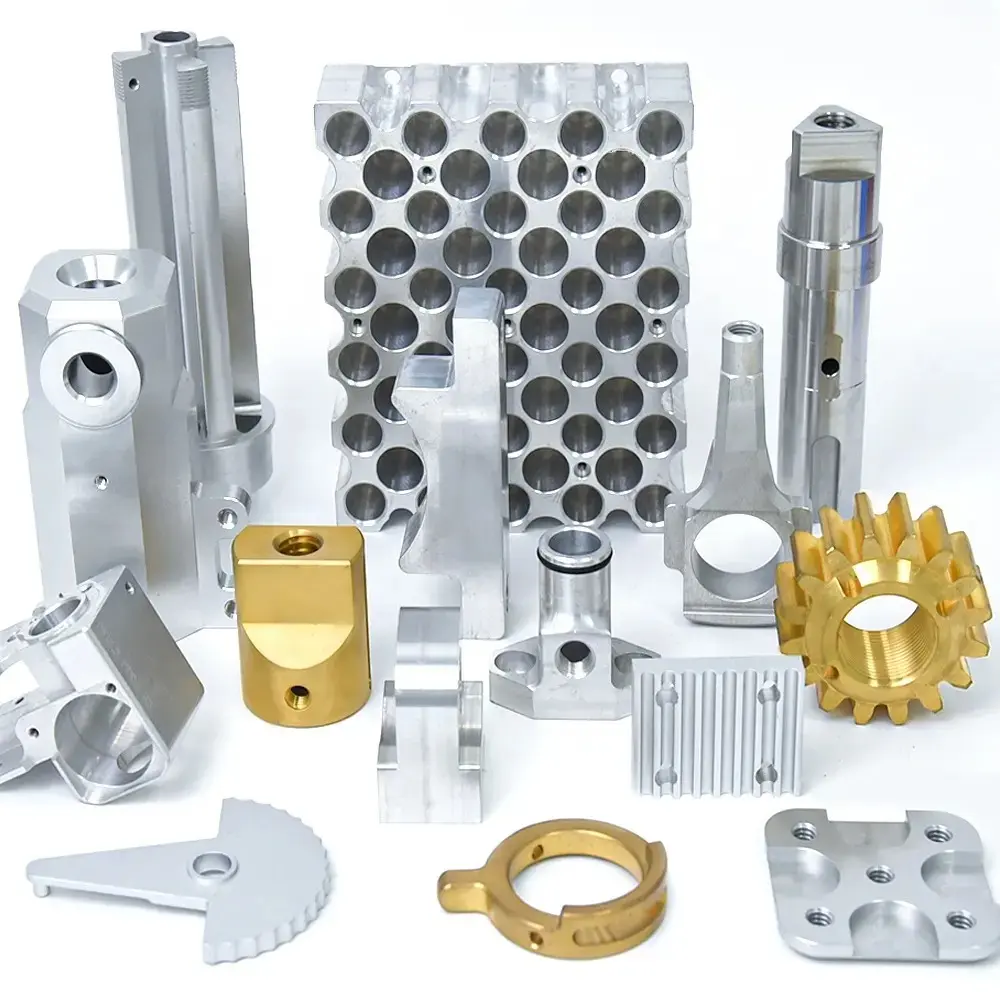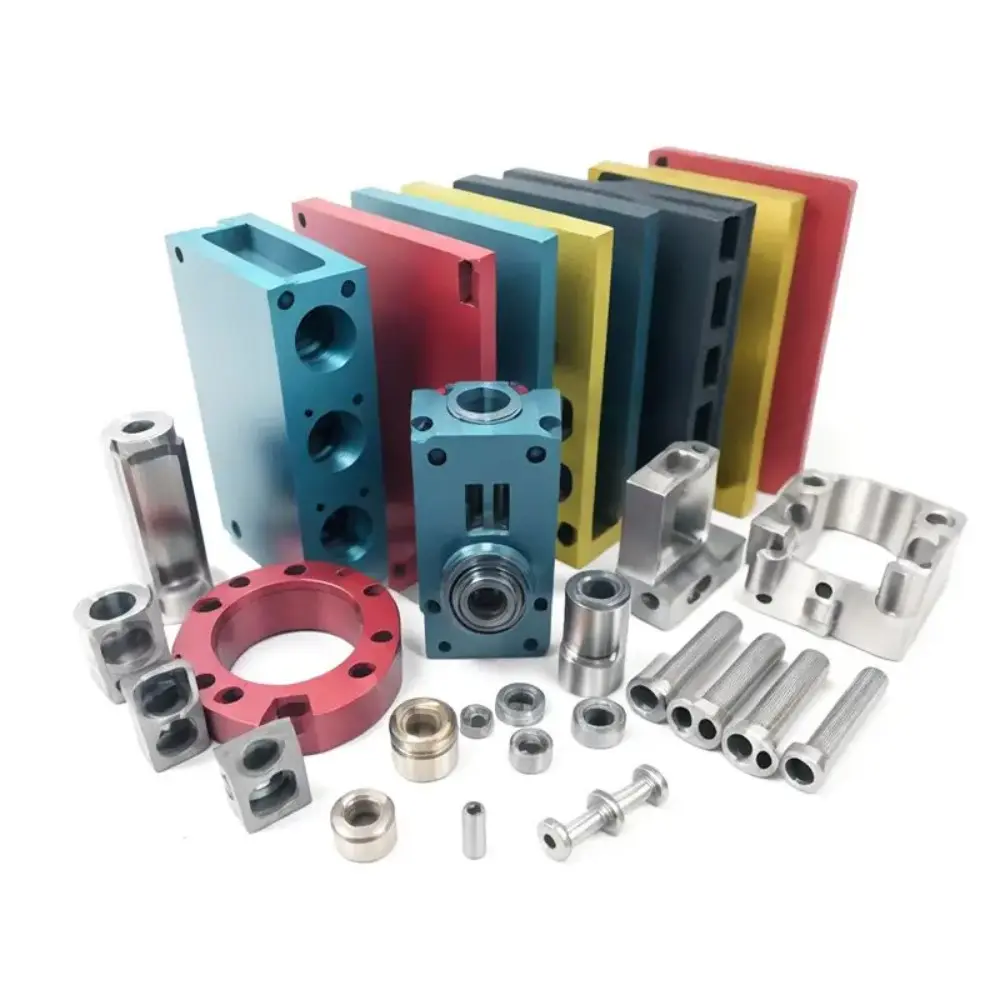Introduction to CNC Machining Materials
CNC machining, or Computer Numerical Control machining, represents a revolutionary leap in manufacturing technology, fundamentally altering traditional production methods. This process utilizes computer software to control machine tools, allowing for the precise shaping and fabrication of materials. By translating designs from a computer-aided design (CAD) program into actionable manufacturing instructions, CNC machining enhances efficiency while minimizing human error. The significance of CNC machining in modern manufacturing cannot be overstated; it serves a variety of industries ranging from aerospace and automotive to electronics and medical devices.
At the core of CNC machining are its automated capabilities, which streamline production by enabling the creation of complex shapes and features that would be difficult or impossible to achieve through manual machining. Automation allows for continuous operation, significantly increasing output and fostering cost-effectiveness. With the ability to run multiple programs in succession, manufacturers can tackle large-scale projects with ease, ensuring that production schedules are adhered to and deadlines met.
Flexibility is another hallmark of CNC machining. Manufacturers can switch between various materials and modify machine settings swiftly, adapting to evolving project specifications or customer demands. This adaptability is crucial in a competitive marketplace, where responsiveness is often the key to maintaining a competitive edge. In addition to flexibility, CNC machining boasts exceptional precision, capable of achieving tight tolerances that are essential for high-quality components. The accuracy of CNC machines not only improves the final product but also reduces waste, enhancing overall productivity.
However, the choice of materials in CNC machining plays a pivotal role in the success of manufacturing operations. Different materials exhibit unique properties which affect how they can be machined and the ultimate capabilities of their resulting components. Therefore, an understanding of CNC machining materials is essential for optimizing production and ensuring the integrity of the end product.
Types of CNC Machining Processes
CNC machining encompasses various processes that utilize computer-controlled equipment to shape, cut, and finish materials for manufacturing purposes. Each method has unique characteristics, making it suitable for different applications and materials. Among the most common CNC machining processes are milling, turning, drilling, and electrical discharge machining (EDM).
Milling is one of the most versatile CNC machining processes, employing rotating cutting tools to remove material from a workpiece. This process is particularly effective for creating complex shapes and features, such as contours and pockets, on a diverse range of materials including metals, plastics, and composites. Due to its adaptability, milling is commonly used in the production of prototypes, molds, and intricate components.
Turning, on the other hand, involves the rotation of a workpiece while a stationary cutting tool shapes it. This process is typically used for cylindrical parts and is often suited for materials like metals and plastics. Turning is commonly used in automotive and aerospace industries to manufacture components such as shafts, bushings, and fittings. The precision of this method ensures that parts achieve tight tolerances, which is crucial for high-performance applications.
Drilling is a straightforward yet vital CNC machining process, fundamental for creating holes in various materials. CNC drilling machines can work with a multitude of materials, including metals, wood, and polymers. This process is essential in creating precise openings for screws, bolts, and other fasteners in assembled products.
Lastly, electrical discharge machining (EDM) is a specialized process making use of electric sparks to erode material from a conductive workpiece. EDM is particularly effective for hard metals and intricate designs, making it an invaluable technology in industries where precision is paramount. Common applications include tool and die manufacturing and the production of complex geometries.
The variety of these CNC machining processes—milling, turning, drilling, and EDM—highlights the flexibility and efficiency of CNC technology. By employing the appropriate method, manufacturers can effectively work with a wide array of materials, ensuring excellent outcomes tailored to specific production demands.
Common Materials Used in CNC Machining
CNC machining is a pivotal process in modern manufacturing, utilizing various materials to create precision parts across diverse industries. Among the most commonly used materials are metals, plastics, and composites, each bringing unique properties that enhance their suitability for specific applications.
Metals such as aluminum, steel, and titanium are prevalent in CNC machining due to their favorable mechanical attributes. Aluminum is lightweight and offers excellent corrosion resistance, making it ideal for aerospace components and automotive tooling. It possesses good thermal conductivity, which can be beneficial in heat dissipation applications. Steel, known for its remarkable strength and durability, is widely used in manufacturing tooling and structural parts. Its ability to withstand high stress makes it a preferred choice in construction and heavy machinery. Titanium, while more expensive, is renowned for its high strength-to-weight ratio and outstanding corrosion resistance, making it suitable for medical implants and high-performance aerospace components.
Plastics also play a crucial role in CNC machining. Materials such as ABS (Acrylonitrile Butadiene Styrene) and nylon are extensively used because of their versatility and ease of machining. ABS is valued for its good impact resistance and rigidity, commonly found in consumer products and automotive interiors. Nylon, known for its excellent wear resistance and low friction properties, is often used in engineering applications where durability is paramount. Additionally, plastics are generally lighter than metals, which can be advantageous in applications requiring weight reduction.
Composites, which combine materials to leverage the advantages of their constituents, are gaining popularity in CNC machining. These materials can offer superior mechanical performance while reducing overall weight. From aerospace applications requiring lightweight, high-strength materials to automotive parts that demand intricate designs, composites are vital in pushing the limits of CNC machining capabilities.
Impact of Material Selection on Product Quality
The selection of materials in CNC machining plays a pivotal role in determining the final product’s overall quality. Various properties, including strength, durability, weight, and finish, can be significantly influenced by the material chosen. Each material showcases distinct characteristics that can lead to vastly different outcomes in both performance and aesthetics, serving as a vital consideration in the manufacturing process.
For instance, metals such as aluminum offer a favorable strength-to-weight ratio, making them ideal for applications in the aerospace sector where both performance and fuel efficiency are crucial. A case study involving an aerospace component revealed that an extrusion made from high-grade aluminum not only reduced weight by 30% but also improved overall structural integrity compared to a similar component made from steel. Such advantages underscore the importance of material selection in achieving desired performance metrics.
On the other hand, thermoplastics are often chosen for their versatility and ability to facilitate complex designs. An example can be seen in the automotive industry, where polycarbonate materials are utilized for manufacturing lightweight yet robust vehicle components. A study showed that vehicles using polycarbonate parts demonstrated superior impact resistance and a reduction in overall vehicle weight, contributing to enhanced fuel economy without compromising safety.
Moreover, the finish quality is another critical aspect affected by material type. Materials like stainless steel and titanium, while generally more expensive, can yield superior surface finishes and corrosion resistance. Case studies in medical device manufacturing show that using these materials resulted in products that not only met industry standards but also offered improved safety and longevity.
Thus, careful consideration of material selection is essential for ensuring product quality. Each choice carries implications for the final properties of the product, influencing everything from functionality to visual appeal. By understanding the material’s behavior under various conditions, manufacturers can make informed decisions that enhance both performance and longevity.
Cost Considerations and Material Selection
When embarking on a CNC machining project, understanding the cost implications of material selection is essential for successful manufacturing. The type of material chosen not only influences the initial pricing but also affects the overall fabrication cost throughout the project lifecycle. Factors such as material sourcing, machining complexity, tooling requirements, and post-processing needs play a significant role in determining the final expenditure.
The sourcing of materials can greatly impact costs. For instance, high-grade metals or specialized plastics typically involve higher procurement costs due to their inherent properties and processing requirements. Additionally, the availability of materials can influence their pricing, with some materials being more readily accessible than others. Factors such as global supply chain fluctuations should also be considered, as they can lead to unexpected price variations.
The complexity of machining processes required for different materials must be assessed as well. Softer materials are generally easier and faster to machine, leading to lower machining costs, while harder metals necessitate more intricate machining procedures. This increased complexity often requires specialized tools and equipment, further escalating expenses. Hence, an accurate understanding of machining complexity can aid in selecting materials that balance performance and cost-efficiency.
Tooling requirements are another critical aspect of material selection. Certain materials may demand specific cutting tools or wear-resistant materials to handle the excessive friction generated during machining. These additional costs can accumulate, making it imperative to align tooling choices with material characteristics.
Lastly, the need for post-processing must not be overlooked. Some materials may require additional finishing operations such as polishing or coating, contributing to increased project costs. Therefore, careful analysis of all these considerations is crucial for optimizing material selections and managing costs effectively throughout the CNC machining process.
Material Suitability for Specific Applications
When assessing the suitability of materials for various applications in CNC machining, several key factors must be considered to ensure that the chosen material aligns with operational requirements. These factors include environmental conditions, load-bearing requirements, and adherence to regulatory standards.
Environmental factors such as temperature and humidity significantly influence the choice of material. For instance, materials like aluminum may be appropriate for applications where the temperature is moderately controlled, while high-temperature environments may necessitate the use of materials such as titanium or specialized thermoplastics designed to withstand elevated heat. Additionally, humidity levels can affect the performance of certain materials; for example, wood-based composites may absorb moisture, leading to dimensional changes and reduced structural integrity. Therefore, evaluating the environmental context of the intended application is crucial in determining material suitability.
Load-bearing requirements also play a pivotal role in material selection for CNC machining. The materials must possess adequate mechanical properties such as tensile strength, fatigue resistance, and impact toughness to withstand operational stresses without failure. For heavy-duty applications, metals like steel and titanium are often preferred due to their superior strength characteristics. Conversely, lighter materials such as polycarbonate or nylon may be suitable for low-load applications, offering advantages like reduced weight and cost.
Lastly, compliance with industry-specific regulatory standards cannot be overlooked. Many applications, especially in the aerospace, medical, or automotive sectors, require materials that meet stringent regulations to ensure safety and reliability. Understanding these standards will guide manufacturers in selecting materials that not only meet performance criteria but also fulfill compliance obligations.
By thoroughly evaluating these considerations, manufacturers can ensure the right material is selected based on its appropriateness for specific applications, ultimately leading to enhanced product performance and reliability.
Emerging Materials in CNC Machining
The landscape of CNC machining is continually evolving, largely driven by the advent of innovative materials that enhance performance and sustainability in manufacturing processes. Among the notable advancements are advanced composites and alloys, which are redefining traditional machining capabilities. Composites, which are engineered from a combination of materials, offer improvements in strength-to-weight ratios and resistance to wear and corrosion. These properties make them ideal for applications in industries such as aerospace and automotive, where performance and durability are paramount.
Another significant innovation in CNC machining involves the development of new alloys. Alloys tailored for specific applications feature enhanced mechanical properties, including increased hardness and ductility, which can lead to improved machining efficiency. The ability to operate under extreme conditions while maintaining structural integrity not only improves the life span of the components but also enhances the overall reliability of the final product. Machinists can leverage these materials to produce intricate components that can withstand high stresses in demanding environments.
In addition to performance advantages, the emergence of environmentally friendly materials is particularly noteworthy. Biodegradable polymers and recycled metals offer sustainable alternatives that can significantly reduce the environmental footprint of the manufacturing process. These materials are designed to meet the modern demands of industry without compromising on quality or performance. By integrating such options into CNC machining operations, manufacturers are increasingly able to align with regulations and corporate responsibility initiatives aimed at promoting environmental sustainability.
By understanding and embracing these emerging materials, manufacturers can achieve a competitive edge in the market. As the industry adapts to growing demands for high-performance, lightweight, and environmentally friendly products, advancements in CNC machining materials will undoubtedly play a critical role in shaping the future of manufacturing.
Best Practices for Material Selection in CNC Machining
Selecting the right material for CNC machining projects is a critical aspect that can determine the overall success of manufacturing processes. To optimize material selection, it is essential to conduct thorough research on materials that are compatible with the specific project requirements. Understanding the mechanical properties, such as strength, hardness, and thermal conductivity, can help in choosing materials that are not only suitable but also enhance the performance of the final product.
Consultation with suppliers is another best practice that should not be overlooked. Suppliers possess valuable insights regarding the characteristics and availability of various materials. A collaborative approach can be beneficial, as suppliers may recommend alternatives that offer cost-effectiveness or improved functionality. Engaging suppliers early in the project ensures that the selected materials align with production capabilities and logistics considerations.
Lifecycle costs also play a significant role in material selection. When evaluating materials, it is necessary to scrutinize not just the initial acquisition costs but also the long-term implications, such as maintenance, durability, and recyclability. For instance, while a more expensive material may have a higher upfront cost, its longevity and reduced maintenance requirements could result in lower overall costs over time.
Furthermore, understanding the specific machining requirements is fundamental. Each material can have unique machining characteristics that require distinct tools and techniques. Factors such as cutting speed, feed rate, and tool material must be thoroughly researched to prevent complications during the machining process. By paying keen attention to these details, manufacturers can avoid common pitfalls and enhance product quality.
In conclusion, effective material selection in CNC machining is achieved through comprehensive research, strategic supplier engagement, lifecycle cost consideration, and a solid grasp of machining requirements. Implementing these best practices contributes significantly to successful outcomes in manufacturing projects.
Conclusion: Making Informed Material Choices
In the realm of CNC machining, the selection of appropriate materials is undeniably fundamental to achieving optimal results. Throughout this discussion, we have explored various types of materials utilized in CNC machining, including metals, plastics, and composites. Each material exhibits distinct properties that can significantly influence the overall manufacturing process and the resultant product characteristics. Understanding these nuances allows manufacturers to make informed choices that align with their specific project goals.
A key takeaway from our analysis is the importance of balancing factors such as strength, weight, cost, and machinability when selecting materials. For instance, aluminum is often favored for its lightweight nature and excellent machinability, making it suitable for aerospace applications. Conversely, steel offers superior strength and durability, which may be more appropriate for heavy-duty machinery components. The trade-offs involved in material selection can dramatically affect not only the functionality of the final product but also the efficiency and cost-effectiveness of the manufacturing process.
Moreover, the significance of quality cannot be overstated. High-grade materials contribute to enhanced performance and longevity of the components produced. As manufacturers continue to navigate the complexities of different materials and their properties, prioritizing suitability and quality is essential in developing products that meet exacting standards and customer expectations. It is advisable for organizations to conduct thorough research and engage in consultation with material experts to explore the options available thoroughly.
In conclusion, informed material choices are pivotal for optimizing CNC machining processes. By understanding and evaluating the diversity of materials, manufacturers can drive innovation and success in their production endeavors. The journey towards mastering CNC machining is ongoing, and continual exploration of material options will lead to improved practices and outcomes in the field.






